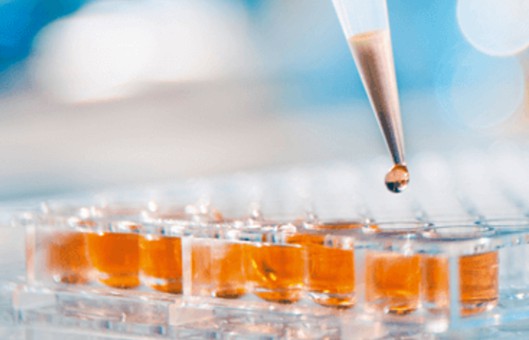WST-1 Assay Protocol for Cell Proliferation and Viability
GUIDELINE
The measurement of cell proliferation and cell viability has become a key technique in the life sciences. The need for sensitive, reliable, fast, and easy methods has led to the development of several standard assays. Proliferation assays have become available for analyzing the number of viable cells by the cleavage of tetrazolium salts added to the culture medium. The tetrazolium salts are cleaved to formazan by cellular enzymes. An expansion in the number of viable cells increases the overall activity of mitochondrial dehydrogenases in the sample, which in turn increases the amount of formazan dye formed. Quantification of the formazan dye produced by metabolically active cells can be done using a scanning multi-well spectrophotometer. The cell proliferation reagent WST-1 is designed to be used for the non-radioactive, spectrophotometric quantification of cell proliferation, growth, viability, and chemosensitivity in cell populations using the 96-well-plate format.
METHODS
Assay protocol to measure cell proliferation
- Seed CTLL-2 cells at a concentration of 4 × 103 cells/well in 100 μL culture medium containing various amounts of IL-2 (final concentration e.g., 0.005-25 ng/mL) into microplates (tissue culture grade, 96 wells, flat bottom).
- Incubate cells for 48 h at 37°C and 5% CO2.
- Add 10 µL/well cell proliferation reagent WST-1 and incubate for 4 h at 37°C and 5% CO2.
- Shake thoroughly for 1 min on a shaker.
- Measure the absorbance of the samples against a background control as blank using a microplate (ELISA) reader. The wavelength for measuring the absorbance of the formazan product is between 420-480 nm (max. absorption at about 440 nm) according to the filters available for the ELISA reader. The reference wavelength should be more than 600 nm.
Assay protocol to measure cytotoxicity
- Culture cells in microplates (tissue culture grade, 96 wells, flat bottom) in a final volume of 100 µL/well culture medium in a humidified atmosphere (37°C and 5% CO2).
- Seed cells at a concentration of 5 × 104 cells/ well in 100 μL culture medium containing 1 μg/mL actinomycin C1 and various amounts of hTNF-α (final concentration e.g., 0.001-0.5 ng/mL) into microplates (tissue culture grade, 96 wells, flat bottom).
- Incubate cell cultures for 24 h at +37°C and 5% CO2.
- Add 10 μL cell proliferation reagent WST-1 and incubate for 4 h at 37°C and 5% CO2.
- Shake thoroughly for 1 min on a shaker.
- Measure the absorbance of the samples against a background control as blank using a microplate (ELISA) reader. The wavelength to measure the absorbance of the formazan product is between 420-480 nm according to the filters available for the ELISA reader. The reference wavelength should be more than 600 nm.
Creative Bioarray Relevant Recommendations
- Creative Bioarray provides cell proliferation assay services for our customers. We provide optional assay methods based on the cell type and protocol and the customer's preference for proliferation measurement. Additionally, we are capable of providing various options for cell viability assays and compound profiling services.
- We offer a variety of reagents for studying cell proliferation, cell viability, and cell cytotoxicity including fluorescent and non-fluorescent reporter dyes.
| Cat. No. | Product Name |
| CSK-XP011 | SuperQuick® Cell Proliferation Assay Kit (Fluorometric) |
| CSK-XP0003 | SuperQuick® Cell Proliferation Colorimetric Assay Kit |
| CSK-XV003 | SuperQuick® Cell Viability Fluorometric Assay Kit |
| CSK-XC001 | SuperQuick® Bioluminescence Cytotoxicity Assay Kit |
| CSK-XC009 | SuperQuick® WST-NR-CV Combined Cytotoxicity Assay Kit |
NOTES
- Ensure that the cell culture conditions, including the growth medium, temperature, and CO2 levels, are optimized for the specific cell type being used.
- Monitor the passage number of the cells to avoid using overly confluent or senescent cultures, as these can affect the accuracy of the results.
- Include appropriate control groups to compare the WST-1 assay results with untreated or vehicle-treated cells to account for any non-specific effects.

